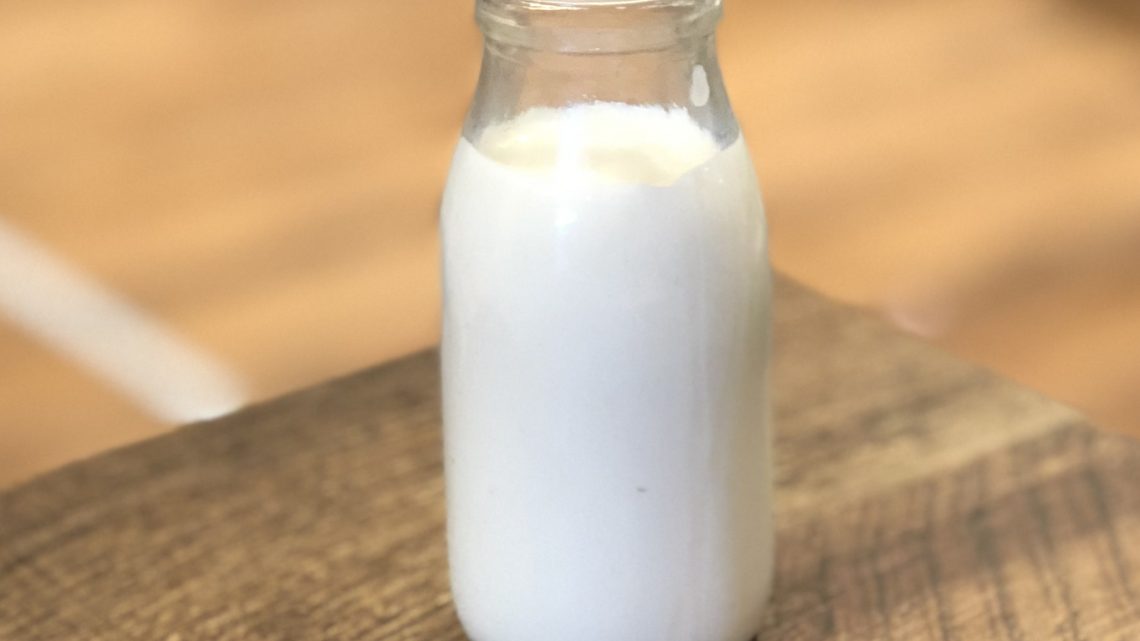
A Beginner’s Guide to going Dairy-Free
One of Piglet’s toddler friends has just had a new little brother join their family. After a few months, and well before getting to introducing food, it seems likely that the new arrival might be allergic to milk. It’s prompted a few conversations in the style of the ‘the idiot’s guide to…’ going milk-free. I thought it might be worth sharing a handful of useful ‘first tips’ for suddenly changing your diet.
Other milks are available
Granted if you’ve lived on a diet of ‘cows milk by fridge-light’ then you’re not going to think they compare but there are lots of dairy-free milks available and they’re becoming increasingly popular.
I wrote a bit about this a while ago: http://www.allergendad.co.uk/review/dairy-free-milks/ which might be useful.
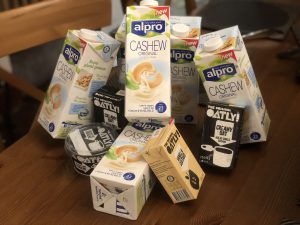
Its definitely worth looking at the nutritional values though, depending on what you’re using them for. Soya milk (while not suitable for us) is good for protein but you might also want to consider ones with added calcium. It’s also worth pointing out in most cases these are milks for adults or weaning babies as part of their food (porridge, mashed potato, etc…). You need specialist dairy-free milks if you’re looking to replace breastmilk, especially in the first 6 months
Things like sesame seeds (and so tahini), sunflower seeds, hemp seeds, almonds, brazil nuts, broccoli, fennel, figs, oranges, beans (most), kale and rocket are all high in calcium if you’re worried about getting enough of this in your diet (especially if breastfeeding) without cow’s milk.
Pizza is still possible
This blew my mind. To me, Italian restaurants were obvious no-go areas with pizzas and pastas copiously covered in cheese. But, in truth, this area of the eating-out market is probably the front runner in catering for alternatives. Zizzi and Pizza Express, in particular, will do vegan cheese (not as bad as it sounds!) on pretty much any pizza and have first-class allergen checklists, substitution lists, and specialist menus. You can even make them at home with several decent makes of coconut-oil-based cheese alternatives. Also, and this sounds silly, it’s taken me quite a long time to realise that pizza without cheese can also be quite nice.
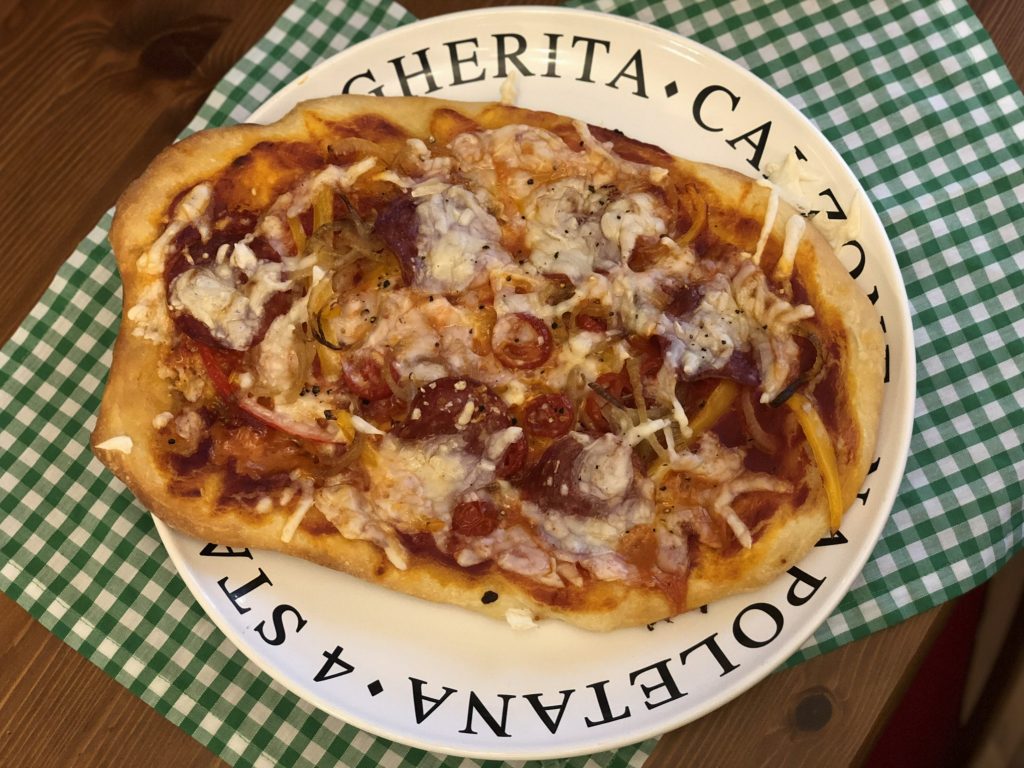
Chocolate just becomes a bit darker
Dark chocolate is often dairy-free (although commonly not soya-free) and while not the same, you’d be surprised how quickly you can get into it. I used to treat it like an acquired delicacy; I could eat a square but I wouldn’t want more than that. These days I can wade through a box of dark chocolates like I’m Bridget Jones commiserating a poor love-life with a full tub of ice-cream.
I’m a HUGE fan of Booja Booja who make vegan chocolates. http://www.allergendad.co.uk/review/booja-booja/. Green and Black’s Velvet collection is also good for anyone needing to cut out soya lecithin which is all too commonly found in dark chocolate elsewhere.
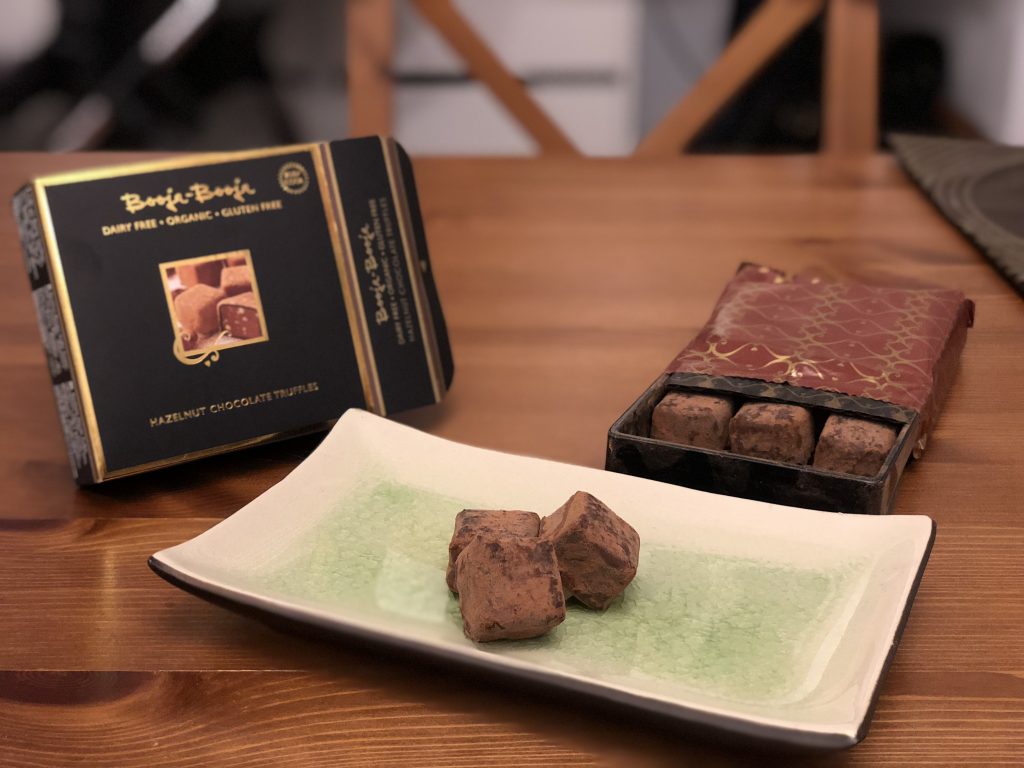
My soul for a chocolate… 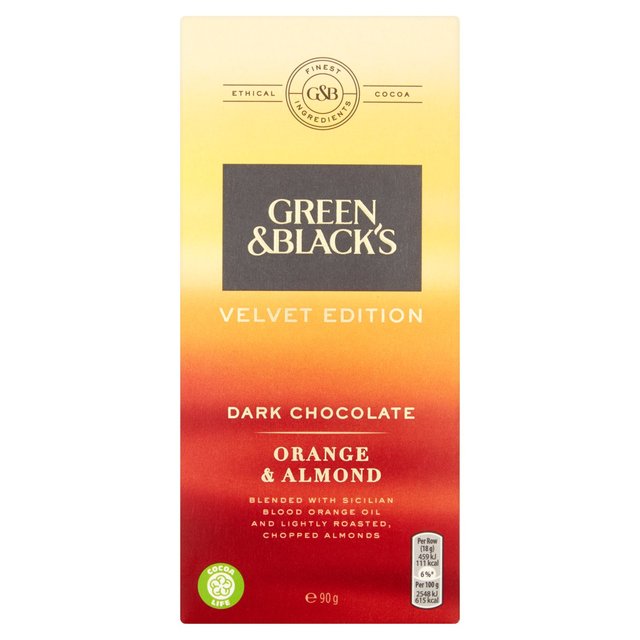
Just one square…
Ice-cream
Dairy-free ice-creams also exist, although these vary wildly in their ‘quality’ in my opinion. Yet again, Booja Booja are one of the front runners here with amazing nut-based ice-creams. They are expensive though. It takes a particular stubbornness to pay more for ice-cream without the main ingredient in it. Walls Magnums also come in a vegan variety now and are surprisingly good: http://www.allergendad.co.uk/review/vegan-magnums/
Cakes are pretty much interchangable
This surprised me, I guess because while I do a lot of cooking; I do relatively little baking in comparison. Dairy free milks work just as well in most cakes and butter can just be replaced with Stork vegetable fat or oil. I think my surprise partially comes from disappointing vegan cakes which can be (but aren’t all!) disappointing. But that’s largely because egg is very difficult to replace.
I would certainly be wary of most publicly made cakes. Very few are dairy-free unless they explicitly say so. I think as a rule of thumb it’s always something to avoid unless you’re quite sure they’re suitable.
Biscuits just need careful selection
On the other hand, biscuits aren’t quite as bad as they might seem. Granted a good percentage will contain butter, so it’s not something you’re going to want to gamble with, but because they usually come in packaging – once you know which ones are suitable you’re on fairly safe ground. Things like hobnobs and bourbon biscuits are often suitable. Although be aware that big brand versions and supermarket-own versions can vary. It’s quite common to find that one has whey powder and the other doesn’t for no obvious reason.
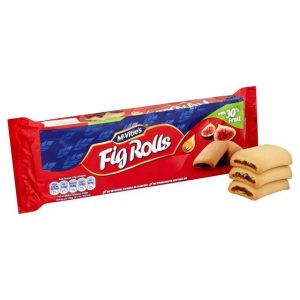
Coffee shops can do other milks
On the back of dairy-free milks being available – coffee shops are getting much, much better at catering for dietary requirements. At first it was generally just soya milk that was available but increasingly there is a plethora of alternatives. In particular, Costa Coffee have just started doing Almond Milk which is great for us! http://www.allergendad.co.uk/experience/costa-now-does-almond-milk/
It’s worth pointing out though that steamed milk is rife for cross-contamination so definitely something to be aware of for severe/highly sensitive allergies.

Allergen Menus exist!
This might seem a silly one but it really is only in the last few years that I’ve known to ask for them and not many more years before that that they started. By law, food serving establishments need to know what ingredients are in what dishes and provide this information to you. As a result, nearly all restaurants have an ‘allergen menu’ that you can look at to help you decide what you’d like to eat. Granted they vary from place to place with some being incredibly informative and others dangerously out of date. But as awkward as it can feel at first (particularly out with a group of other people), please ask for them and use them. It’s amazing how quickly it just becomes second nature. I’ve got friends who for years have just guessed what item is most likely to be safe or just asked about that one likely safe item and missed out on a plethora of options time after time.
Don’t try the cheese straight away
This is just my personal suggestion but don’t dive straight into dairy-free cheese as a immediate substitute for the cheese-based meals you’d previously been eating. Granted some are better than others (and work better in some meals than others) but if these are the first things you go to you’ll be disappointed and feel like dairy-free food is second-class.
There are lots of fantastic meals you can make either by using substitutes or just moving towards cuisines where milk is less prominent. You can always then look to substitute cheese in familiar meals once you’ve got a firm grounding; but I wouldn’t look to base a new diet on these from the start.
If you are craving some of your ‘lost’ options then a vegan cheese pizza (as above) is well worth considering.
Avoid: sandwiches, jacket potatoes without checking
Obviously as you cut milk out of your diet – you have to start questioning whether everything contains it. There will undoubtedly be things that you’re surprised contain it and other things you’re surprised that don’t. As one of the legal 14 allergens – it has to be highlighted in any ingredients so this is the first place to check.
However there are also some areas I can say from experience that have been repeated trip hazards and I think it might help to know these from the start:
Allergy law is becoming more and more high profile and cooks, chefs and catering staff are increasingly well informed (generally speaking). However, in my experience there can be problems when ownership ends up getting shared between chefs and customer facing servers or waiter/waitresses. Ask to see what’s in the coronation chicken and you’ll almost certainly be told the well documented ingredient list for the filling. But ask to have it in a jacket potato or a freshly made sandwich and the communication can fall down. I’ve had multiple occasions where I’ve checked that I can eat something as dairy-free only to be served it with butter. While it clearly shouldn’t be the case – the act of preparing that filling into the actual meal can fall outside the carefully documented structures of the kitchen. As so, I would always take particular care and often double check things like sandwiches or jacket potatoes.
Great blog Louis,
Very well put together, with lots of useful information for a milk avoider. Agree about Italian food but don’t forget Asian food! I know it’s more likely to have soya but for a milk avoiders it’s yummy. Plenty of calcium and protein in tofu!
Thanks Alex,
Good point about Asian food. You’re right it can be a challenge for soya and as a result we often just cook for ourselves (I made my own ‘hoisin sauce’ the other day – more about that later). Wagamamas in particular is great for allergen menus and dairy free choice. Personally, I never managed to get on board with tofu even before my allergic son came along – but I know that some people really like it.
Thanks for this blog Louis, I tried oat milk as an option choice to dairy (having no known allergies myself and found it lacking). However after preparing the daily coffee for my beloved with oat milk for a year, I was sitting sipping my coffee a couple of days ago thinking ‘wow this is delicious’ (I think you are ahead of me here) I realised I was drinking oat milk! There is so much to be said about mindset and taste!!